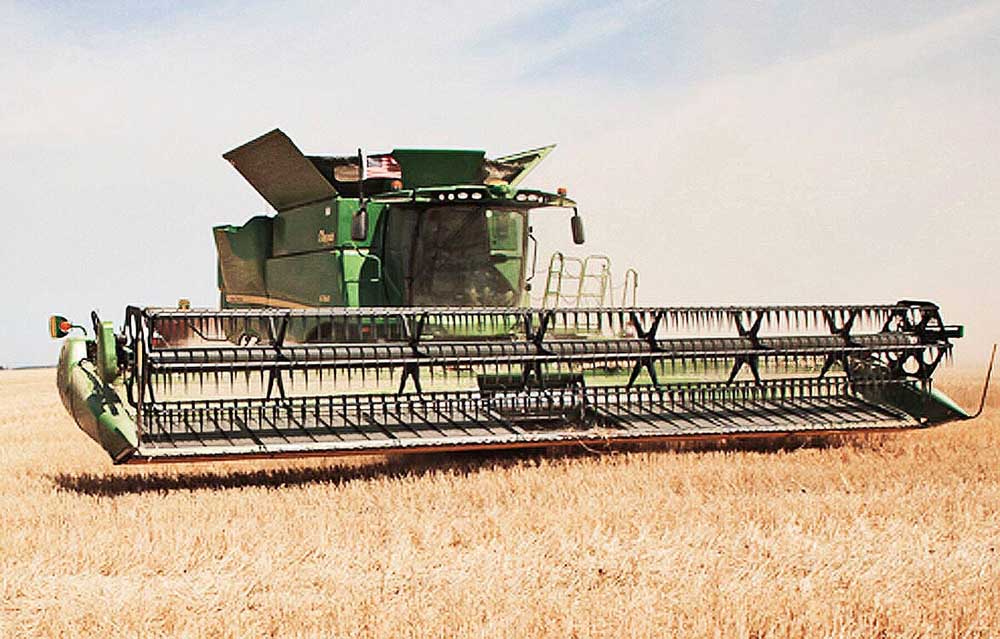Manufacturers hunker down for farm machinery slump
Published 4:00 pm Monday, July 29, 2024

- A combine harvests wheat in Morrow County in July.
Equipment manufacturers are hunkering down for a slump in farm machinery sales as low crop prices and high interest rates depress demand.
Experts say recent layoffs and production curtailments indicate manufacturers aim to prevent a buildup of excess inventories as farmers cut back on spending.
“It’s been a while since we’ve seen things this rough,” said Michael Langemeier, an agricultural economist at Purdue University who tracks the machinery industry.
While growers are coming off several years of decent income, they’re saving that money to preserve liquidity in tough times rather than buy machinery, Langemeier said.
“They’re holding that because they can see the cash flows aren’t going to be that good in ’24 or ’25,” he said.
If profits are healthy, farmers want to reduce their taxable income, which helps spur business investments and equipment purchases, Langemeier said. That isn’t happening now.
“When you have lower farm income, there’s less reason to buy machinery to reduce taxes,” he said. “They’re not going to need those tools.”
Through mid-2024, unit sales of new two-wheel-drive tractors have fallen by nearly 12% compared to last year, according to the Association of Equipment Manufacturers. Meanwhile, the number of self-propelled combines sold in that time has dropped by more than 17%.
Four-wheel-drive tractors are the exception, as they’ve risen nearly 3% in unit sales, but that represents a relatively small segment of the total market and the rate of growth isn’t considered exceptional, said Curt Blades, AEM’s senior vice president of agriculture services and forestry.
“I would call that a replacement market,” he said. “That’s not new demand. It’s essentially flat.”
Major manufacturers, including Deere, AGCO and CNH Industrial, have announced layoffs this year as their revenues have dipped, which is meant to align production with diminished demand, experts say.
“The last thing we want to do is overproduce,” said Blades. “The last thing we want is to have a lot of inventory out there on dealer lots.”
The scale of workforce cutbacks is partly pre-emptive because manufacturers probably don’t anticipate the period of low commodity crop prices will end soon, Langemeier said.
“I think they see this will not just be one year. It’s typically not,” he said. “What it’s going to take is a shock to supply and demand to increase crop prices.”
A major uptick in commodity prices is more likely to result from a weather-induced supply shortage in a key global production region, because demand typically doesn’t surge enough to rapidly deplete stocks, Langemeier said.
For example, production of biodiesel is expected to raise demand for soybeans but that process will likely be gradual, he said. “That’s not going to gobble up soybeans in the near term.”
It’s possible that costs for fertilizer and herbicides will moderate, though, which would boost farm profits even if commodity prices don’t rebound strongly, Langemeier said.
“These break-even costs need to come down,” he said.
Some farmers surveyed by Langemeier say it’s currently an advantageous time to buy machinery because dealers are eager to move equipment off their lots, he said.
“There’s more selection, there’s probably more negotiating room,” Langemeier said.
Unlike the agricultural downturns of the past couple decades, however, high interest rates are preventing most growers from benefiting from these deals, since they prefer to finance such purchases, he said.
“They don’t want to use their cash,” Langemeier said.
It also doesn’t appear that interest rates will change drastically in the short term, he said. “The Fed might lower them a bit, but they’re not going to crash unless the economy crashes.”
The lack of a replacement for the 2018 Farm Bill is also contributing to hesitation among farmers, since they can’t be sure what the agricultural “safety net” will look like, said Blades of AEM.
Provisions in the next farm bill that incentivize the use of new technologies could spur machinery demand, but the legislation’s main impact is to improve predictability, he said.
“It’s more about the uncertainty than the specifics,” Blades said.






